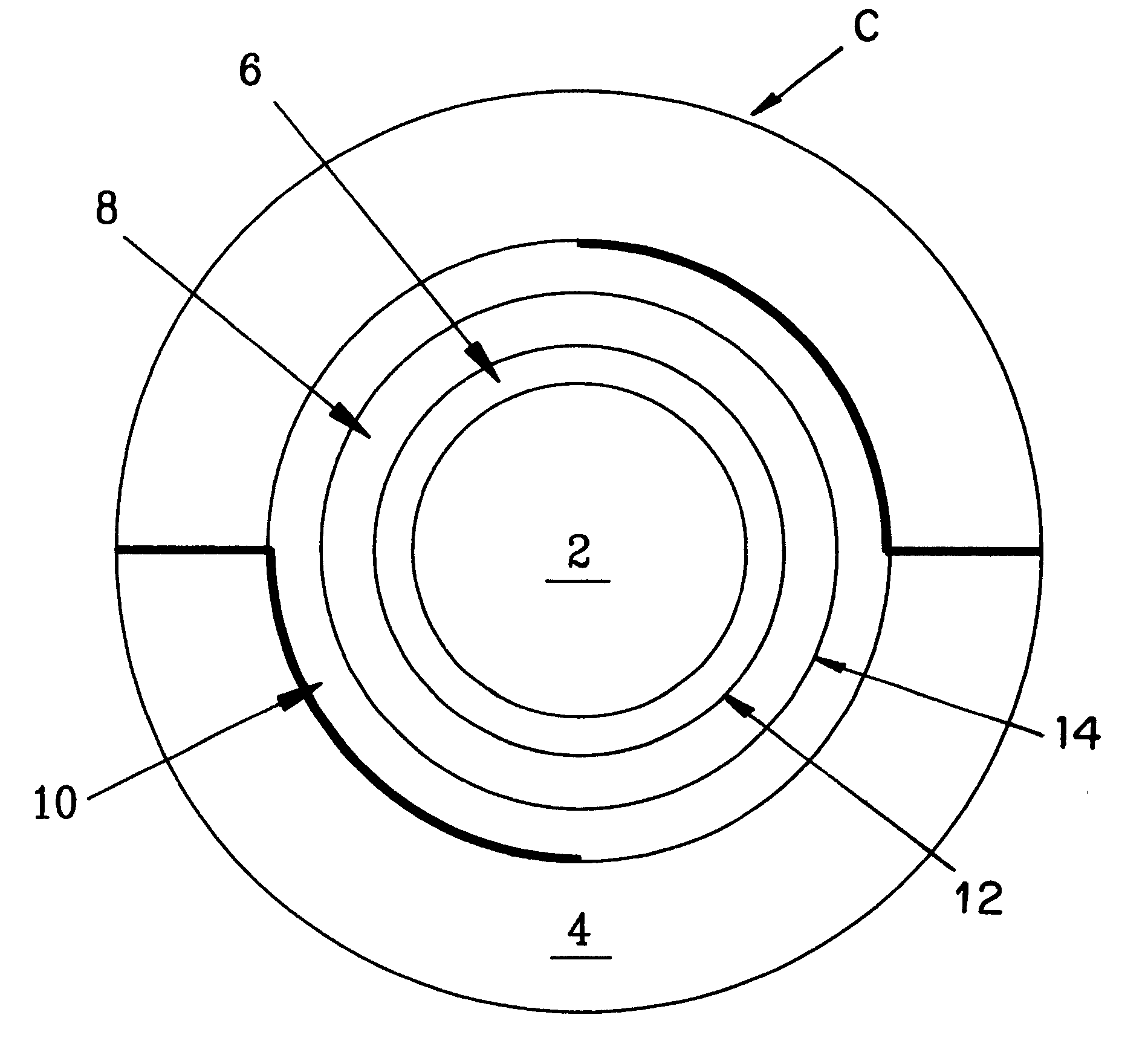Oxidation-resistant interfacial coating for fiber-reinforced ceramic
a fiber reinforced ceramic and interfacial coating technology, applied in the direction of yarn, transportation and packaging, chemistry apparatus and processes, etc., can solve the problems of matrix cracking, limited use of cfccs with carbon or boron nitride interfacial coating, and not solving the problem of all
- Summary
- Abstract
- Description
- Claims
- Application Information
AI Technical Summary
Benefits of technology
Problems solved by technology
Method used
Image
Examples
Embodiment Construction
SiC / SiC minicomposites were prepared and provided with three separate oxide interface layers utilizing significant material mismatch of thermoelastic properties between adjacent layers so as to provide preferential crack deflection and debonding of the multilayer interfaces between the layers. The present example is described in J. Am. Ceram. Soc., 81 [3] 717-20 (1998), which is incorporated herein by reference.
In this example, SiO.sub.2 / ZrO.sub.2 / SiO.sub.2 was selected for the multilayer interphase and infiltrated into a SiC fiber tow (Hi-Nicalon.TM., Nippon Carbon, Japan) using a small hot-wall chemical vapor deposition (CVD) reactor by gas switching from SiCl.sub.4 to ZrCl.sub.4 to SiCl.sub.4 with CO.sub.2 and H.sub.2 as a source of oxygen. The reactor was operated at a temperature of 1050.degree. C. and a pressure of 10 kPa. The main features of the CVD reactor are described in M. A. Borst, W. Y. Lee, Y. Zhang, and P. K. Liaw., "Preparation and Characterization of Chemically V...
PUM
| Property | Measurement | Unit |
|---|---|---|
| temperature | aaaaa | aaaaa |
| diameter | aaaaa | aaaaa |
| diameter | aaaaa | aaaaa |
Abstract
Description
Claims
Application Information
 Login to View More
Login to View More - R&D
- Intellectual Property
- Life Sciences
- Materials
- Tech Scout
- Unparalleled Data Quality
- Higher Quality Content
- 60% Fewer Hallucinations
Browse by: Latest US Patents, China's latest patents, Technical Efficacy Thesaurus, Application Domain, Technology Topic, Popular Technical Reports.
© 2025 PatSnap. All rights reserved.Legal|Privacy policy|Modern Slavery Act Transparency Statement|Sitemap|About US| Contact US: help@patsnap.com


